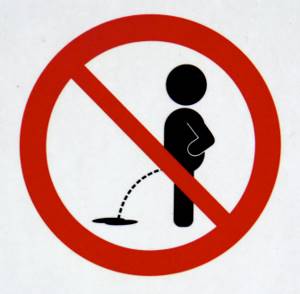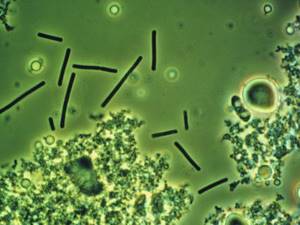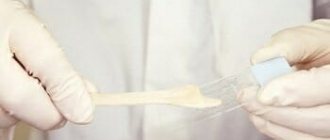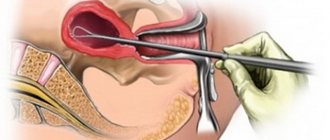When do you need to take a Gynecological smear test?
- If you suspect inflammatory changes in the urogenital tract or infection with sexually transmitted diseases
- Suspicion of a violation of the vaginal microflora (taking antibiotics, poor diet, wearing synthetic underwear, panty liners, etc.)
- As part of a comprehensive diagnosis during pregnancy (registration, at 30 and 37 weeks of pregnancy), before gynecological interventions (hysteroscopy, separate diagnostic curettage of the uterine cavity and cervical canal, operations on the uterus and/or uterine appendages, medical termination of pregnancy and etc.)
- For differential diagnosis between diseases of the reproductive (colpitis) and urinary systems (urethritis, cystitis)
- When pathological discharge from the genital tract appears (white, yellow, curdled, abundant, with an unpleasant odor, etc.).
Errors during ELISA testing
And during this examination, errors also occur. Most often their reasons are:
- improper collection of material;
- metabolic disorders in patients;
- taking medications that affect the functioning of the immune system;
- immunodeficiency;
- pregnancy , during which the functioning of the immune system also changes. Therefore, if the examination results are positive, other methods are prescribed to confirm or refute the diagnosis.
Detailed description of the study
A woman's genital organs are normally inhabited by many microorganisms. They create favorable physiological conditions and protect the genitals from pathogenic microorganisms. Between themselves, different types of representatives of normal microflora are in balance. A change in their quantitative ratio can lead to an imbalance in this balance: dysbiosis. It can occur due to hormonal disorders, failure to comply with personal hygiene rules, or taking antibiotics.
Dysbiosis can lead to inflammatory diseases of the vagina, uterus, its appendages, and ovaries. Without timely treatment of these diseases, the result may be the inability to conceive and pathologies of pregnancy.
Another common threat to reproductive health is sexually transmitted infections (STIs). The causative agents of some of them are microorganisms that can be reliably identified microscopically.
A flora smear is a microscopic examination of a scraping from a woman’s genitourinary tract (vagina, cervix, urethra). The study evaluates the following indicators, which indicate the composition of the microflora and the presence of inflammatory or infectious processes:
- Rod-shaped bacteria are a normal component of the vaginal microflora. If there are too few of them, we can assume dysbiosis or bacterial vaginosis - excessive reproduction of some representatives of the normal microflora.
- Mushroom elements. Normally, fungi can be part of the microflora, but in very small quantities. The presence of actively reproducing fungi of the genus Candida in the smear indicates candidiasis, in other words, thrush.
- Flat epithelium. These are the cells that line the inside of the genitourinary tract. They are constantly renewed: new ones grow, and old ones peel off and are removed. Such cells should be present in the smear. If there are very few or none at all, this may indicate atrophy or estrogen deficiency/excess testosterone. If there is too much, most likely inflammation has developed there.
- Key cells are the same epithelial cells, but surrounded by bacteria (most often gardnerella). Their presence indicates bacterial vaginosis.
- Slime. Should be present in the smear in moderate quantities. If there is too much or too little, inflammation can be assumed.
- Leukocytes (immune cells). Their presence indicates an inflammatory reaction.
- Trichomonas and gonococci are the causative agents of STIs. Normally they should not be present in the smear.
Each of these indicators is assessed separately for each part of the genitourinary tract (cervix, urethra and vagina). If any deviations from the norm are detected, it will be reliably known where the inflammation or infection occurred.
PCR diagnostics – errors are practically eliminated
The most reliable method of laboratory testing, which can identify pathogens even from a small amount of material, is PCR. But sometimes it gives errors if, for example, samples were taken incorrectly.
Sometimes pathogens are not detected because they are simply not in the discharge, but are located in deeper tissues, for example, inside the prostate in men or in the ovaries and uterus in women. In this case, a provocative smear is done. If blood is used as a sample, no challenge is performed. As a result, the accuracy of the examination during the PCR reaction reaches 100%.
The accuracy of laboratory diagnostics also depends on the equipment and reagents used. Therefore, by taking tests in a modern clinic or diagnostic center, patients significantly reduce the likelihood of a false positive or false negative result.
You can be examined for sexually transmitted infections at the Raduga clinic, which cooperates with the Invitro laboratory network. The modern equipment and advanced technologies used make it possible to reduce the likelihood of incorrect results when determining STDs to a minimum.
What else is prescribed with this study?
Liquid cytology of cervical and cervical canal scrapings (SurePath FocalPoint)
14.13. Scraping 3 days
1,380 som Add to cart
Femoflor Screen (Study of the microflora of the urogenital tract in women, 12 indicators), scraping
50.2.2087. Scraping 3 days
2,100 som Add to cart
Femoflor-16 (Study of microflora of the urogenital tract in women, 16 indicators), scraping
27.39. Scraping 3 days
2,200 som Add to cart
Florocenosis (Study of microflora of the urogenital tract and diagnosis of STIs in women), scraping
28.92. Scraping 3 days
1,860 som Add to cart
Causes of bacteriuria
- Infections, including STDs . In this case, bacteria from the bladder and urethra are found in the urine.
- Unilateral or bilateral pyelonephritis is an infectious disease of the kidneys.
- Acute and chronic inflammatory diseases of the female genital area . With these pathologies, microbes penetrate the genitourinary system through the lymph or blood flow.
- Stones that occur as a result of urolithiasis , obstructing the outflow of urine and causing congestion in the genitourinary system.
- Glomerulonephritis - in this case, the glomerular filter is affected and bacteria enter the urine through the bloodstream.
- Neoplasms of the prostate gland , interfering with the outflow of urine and provoking the proliferation of bacterial flora.
- Rectal fistulas , in which microorganisms from the intestines penetrate into the urine.
Preparing for analysis
It’s not enough to make a smear correctly.
In order for the results to reflect the real picture, it is necessary to prepare for the manipulation.
A few days before the test, you need to give up alcohol and smoking. There must be a balanced diet.
Fatty, fried, spicy foods should be removed from the diet.
The exception is “provocative methods”.
They consist of eating spicy or smoked food and beer.
These foods lead to exacerbation of chronic urinary tract infections.
In this case, the reliability of the analyzes will be significantly higher. This method is used when taking smears from the urethra for gonorrhea in women.
Before the analysis, it is necessary to perform genital hygiene. The last act of urination should be an hour before the procedure.
For a few hours it is worth limiting the amount of liquid consumed.
This may trigger the urge to urinate.
Individual features of preparation for the test will be explained by the attending physician.
When can you take a smear after taking antibiotics?
If taking antibacterial drugs was one of the methods of treating urogenital pathology, then you can take the test immediately upon completion.
This is due to the fact that the study is conducted to evaluate the effectiveness of therapy.
If you are taking antibiotics to treat diseases of other organs, the analysis should be postponed for 2 to 4 weeks.
For a more specific period, it is necessary to provide the attending physician with a list of medications that were taken.
How should biological material be collected?
Often the cause of incorrect test results is a violation of the technique for collecting and processing biomaterial. Proper collection of biological material ensures that during microscopic examination of samples they will contain sufficient quantities of the following elements:
- flat epithelium;
- transformation zones (junctions between squamous and glandular epithelium);
- glandular epithelium.
The transformation zone is of greatest clinical importance, since it is in it that more than 80% of cancer cases are formed. Insufficient coverage of this area significantly reduces the quality of diagnosis.
If the patient has diseases of the cervical canal (erosions, tumors), the biomaterial is taken specifically.
Taking a smear for cytology in women is performed using cytobrushes, which allow you to collect material from hard-to-reach areas. The instruments have other significant advantages - safety and painlessness of the procedures.
Pap smear analysis in women: is it painful?
It should be understood that the procedure for taking smears from women is absolutely painless.
If you are having a smear test for the first time, there is no need to worry about it.
In most cases, scraping is a painless procedure. But when interviewing some women , the fence was painful .
The appearance of discomfort is associated with inflammation and swelling of the urethral mucosa.
This increases its sensitivity to mechanical stress.
Special attention should be paid to the pain threshold.
This is an individual indicator that cannot be determined reliably.
In our center, swabs are taken as carefully as possible.
90% of our patients do not experience discomfort.
Deciphering a smear test in women helps a lot
Deciphering the smear analysis in women greatly helps to determine the cause of a possible pathological process.
Identification of the pathogen during examination will ensure that the correct treatment is prescribed.
To determine the sensitivity of bacteria to drugs, a special test is performed.
Remember! After antibiotic therapy, a control smear should be performed.
Preparing for analysis
Let's look at what is included in such a concept as preparation for a smear.
Testing a smear in women before taking it requires following a few simple rules.
These include:
- 2 days before the examination you need to abstain from sexual intercourse.
- For several days before the test, it is not recommended to use medications in the form of vaginal suppositories, tablets, or douching.
- Directly on the day of taking a smear, several hours before taking it, it is advisable not to urinate.

Pap smear analysis in women: is it painful?
It should be understood that the procedure for taking smears from women is absolutely painless.
If you are having a smear test for the first time, there is no need to worry about it.
How long can a swab test take?
Taking a smear from women is a simple and quick procedure.
Smear analysis in women: how the collection occurs
The material for the procedure is taken from the woman by a gynecologist.
The manipulations are carried out in a special room, on a gynecological chair.
Important! Taking smears is a medical procedure.
Using a special sterile spatula, a gynecologist or venereologist takes smears from the urethra, vagina and cervix.
This sampling allows for the most objective assessment of the condition of the mucous membrane in different parts of the urogenital tract.
Norms for smear analysis in women
Often, patients ask: “What are the normal microflora indicators?”
In order to assess pathology, it is always necessary to have an idea of the norm.
Attention! A smear examination in women is a microscopic method of laboratory diagnosis.
The smear is stained with a special dye.
A medical laboratory worker examines a smear under a microscope and counts the cellular elements.
Then the obtained indicators are standardized and transferred to a form or digital medium.
The result obtained is sent to the attending physician.
If the clinic and laboratory are located in the same room, this is convenient because the results can be obtained as quickly as possible.
A result in which lactobacilli, a small number of squamous epithelial cells and single leukocytes - cells of the immune system - are determined under a microscope is considered normal.

How is a smear examined?
After collecting the material, it is placed on a glass slide.
The drug is dried thoroughly and sent to the laboratory.
Degrees of vaginal cleanliness
When deciphering a smear for flora, much attention should be paid to indicators of cleanliness, which reflect the general condition of the genital organs.
I. _ Acidic reaction (pH 3.8–4.5). This means that a large proportion of microorganisms are lactobacilli (or Doderlein bacilli). Leukocytes and epithelial cells may be present in small quantities. This result indicates excellent reproductive system health.
II . Acidic reaction (pH 4.5–5.0). In this case, the microflora is represented mainly by lactobacilli, but gram-negative bacteria are also found.
III . Alkaline or slightly acidic reaction (pH 5.0–7.0). The smear reveals only a small amount of lactobacilli; bacterial flora and a large number of epithelial cells predominate.
IV . Alkaline reaction (pH 7.0–7.5). There are no Doderlein bacilli in the smear, the microflora is represented by pathogenic microorganisms, and there is a large number of leukocytes. This degree of cleanliness indicates inflammation of the vaginal mucosa.
What microorganisms are most often found in urine
Streptococci appear in urine tests after suffering from tonsillitis, bronchitis, pneumonia, scarlet fever. They most often enter the urinary system through the bloodstream. The condition is usually triggered by low immunity.
E. coli penetrates the urinary system due to poor hygiene and intestinal fistulas. Colibacillary bacteriuria is often recorded with a decrease in the body's defenses caused by diabetes and immune disorders.
Gonococcus - with gonorrhea, gonococci are found in the urine. If the disease has become chronic, there may be no symptoms of infection.
Typhoid Salmonella - with typhoid fever, in 30% of cases, patients experience asymptomatic excretion of microbes in the urine. This condition may persist after recovery.
Brucellosis bacteria - 10% of patients experience excretion of this microbe in the urine. With this infection, an asymptomatic form of bacteriuria is often observed.
Types of bacteriuria
- Asymptomatic , in which, apart from the appearance of microorganisms in urine, nothing worries you.
- True – accompanied by difficult painful urination. The urine that comes out is cloudy, with flakes, pus, and sometimes some blood. There is an increase in temperature, lower back pain, and chills. Men may experience discharge of pus from the urethra.
- Ascending - bacteria penetrate from the lower parts of the urinary tract to the upper ones. Often observed with STDs.
- Descending - in this type of bacteriuria, microbes pass from the kidneys down the ureters, ending up in the bladder and urethra. This situation occurs with pyelonephritis and blockage of the urinary tract with a stone.
Why is it so important to screen for cervical cancer?
The cervix is the element of the female reproductive system that is most sensitive to malignant processes. Cervical cancer (cervical cancer) is a malignant formation that can be treated only in the early stages.
The insidiousness of the disease lies in the fact that it is often asymptomatic. Pathological signs may appear in the later stages, when treatment becomes ineffective.
The only way to prevent this condition is timely diagnosis. In this regard, every woman is obliged to regularly visit a gynecologist and undergo the necessary examination.
What is the research?
Cytology smear is a modern, painless and highly accurate diagnostic method that allows you to identify malignant processes and pathogenic microorganisms that cause inflammation.
The method is based on the study under a microscope of the morphological features of cells in biological material. The widespread use of smear cytology in gynecology has led to a significant reduction in cancer mortality.
The undoubted advantage of the test over other methods is its high accuracy in diagnosing the initial stages of cancer. A detailed study of the morphological features of neoplasms allows you to choose the optimal treatment method.
How to properly prepare for the test?
Proper preparation for the test directly affects the accuracy of the results. For two days before the procedure, you should avoid:
- sexual intercourse;
- douching;
- use of vaginal creams, suppositories, tampons, medications.
The test is not performed during menstrual bleeding, as well as 5 days before and 5 days after it. In addition, acute inflammatory processes are a contraindication.
During pregnancy, especially after 22 weeks, the test is performed only for emergency indications. It should be remembered that this procedure increases the likelihood of miscarriage and premature birth.
What is a test for latent infections?
In some cases, microorganisms are found on the mucous membranes in very small quantities.
This leads to negative results of flora and sterility tests.
To detect hidden infection, the polymerase chain reaction method is used. It allows you to identify traces of DNA.
This means that the analysis can confirm the presence of pathogenic flora even at the slightest concentration.
PCR has the highest accuracy among all tests and allows you to determine the type and genus of a microorganism.
This information makes it possible to carefully select medications.
Carrying out a smear from the urethra for PCR in women is not painful. The unpleasant sensations that may arise vary from person to person.
How to make a urethral smear for PCR
The collection of material is carried out similarly to other types of analysis. The difference lies in the technology itself. To obtain the result, a section of DNA from a bacterium or virus is taken. It is cloned multiple times. This allows you to recreate its original structure. The entire chain is identified and the pathogen is determined. In terms of time, the analysis takes 1 – 2 weeks.
What infections are PCR smears used for?
This method is universal. It allows you to identify any microorganism that has genetic information.
Smear analysis in women: how the collection occurs
After the patient receives a referral for testing, she goes to the doctor's office.
To obtain the material, two methods are used.
In the first, a special tool is used.
It looks like a small brush with rows of thin bristles around its circumference.
This collection method can be painful.
To make a smear, the doctor carefully inserts an instrument into the lumen of the urethra.
He then presses the brush against the wall of the canal.
It is removed by rotational movements.
If the material for the procedure is taken from a woman by a gynecologist, the manipulations are carried out in a special room, on a gynecological chair.
Important! Taking smears is a medical procedure.
Using a special sterile spatula, a gynecologist or venereologist takes smears from the urethra, vagina and cervix.
This sampling allows for the most objective assessment of the condition of the mucous membrane in different parts of the urogenital tract.
After the material is received, it is placed in a special container.
The container indicates the patient’s data, doctor’s data, purpose of the study, date and time.
The biomaterial is sent to the laboratory.
The second method is less traumatic. It is only suitable if there is discharge from the urethral canal.
To obtain the material, finger pressure is applied to the anterior vaginal wall.
Due to this, discharge can be obtained from the urethral outlet.
It is applied to a glass slide.
Indicate the date, time, data of the patient and doctor, and the purpose of the diagnosis.
Control of the collection of material for a smear from the urethra is carried out directly by the medical worker who performs the manipulation.
The doctor decides how to do a smear correctly in a particular case.








